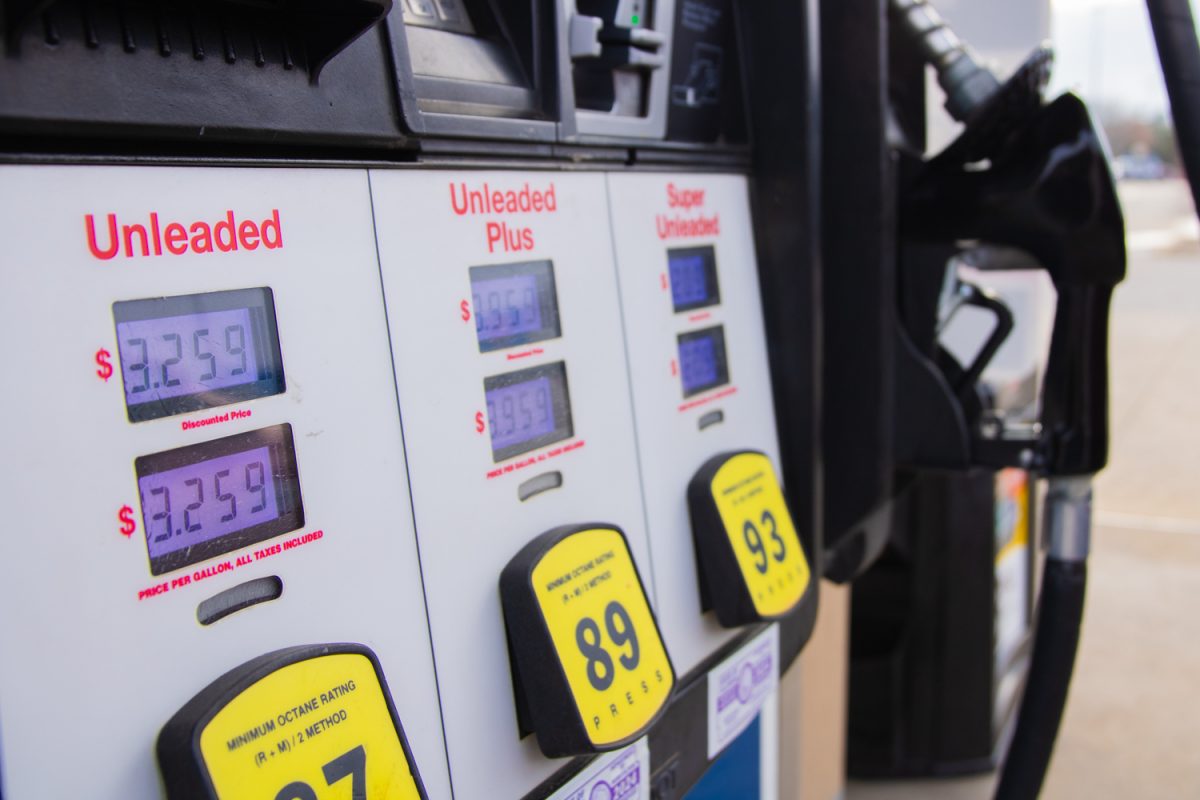We should have seen the writing on the wall. And by “writing on the wall,” I mean the stickers next to gas pumps. These stickers depict former President Joe Biden pointing to the gas prices at the pump, saying, “I did that,” indicating that he was solely responsible for high prices.
Sure, a president’s economic agenda can drive changes in commodity prices. An Oxford Economics brief from October 2024 estimated that a Donald Trump presidency would lower prices by incentivizing United States oil and gas production via deregulation. This increased supply would effectively decrease prices. This would occur at the cost of demand for “transition metals” like lithium, an input in electric vehicles, which aligns with former Vice President Kamala Harris’ proposed decarbonization policy. More on this later.
I’m not expecting voters to perform a stringent cost-benefit analysis on a napkin at the booth. The reality is that everyone who drives — which constitutes a pretty hefty voting base — feels the negative impacts of higher prices at the pump when it’s time to plan budgets. No surprises here; the writing (or the cheapo Biden stickers from Amazon) was on the wall.
We must consider that gasoline and oil prices are uniquely tethered to geopolitics and global affairs, which is what makes them such a compelling research topic.
Biden’s presidency was marred by the COVID-19 pandemic — a disruptive, unprecedented hit to economic activity — which caused a decrease in oil demand. Thus, the price of oil climbed.
Get The Daily Illini in your inbox!
Russia’s invasion of Ukraine also occurred in the Biden era. Geopolitical conflict tends to increase oil prices. This case study was no exception. When Biden implemented sanctions, or financial penalties, to prevent Russian oil imports, oil prices rose again.
Where does that leave us now? Trump, on TruthSocial, sees the recent decreases in oil prices and borrowing costs as a success.These decreases came about due to the unprecedented, sweeping new tariffs, to the dismay of every practicing economist.
It is not an open-and-shut case, however. While falling oil prices, which means lower gas prices, may seem like a win for consumers, they often signal an economic slowdown and can reinforce fossil fuel dependence.
Some recent history: Trump’s sweeping tariffs sparked fears that a trade war could slow down the global economy. When the economy grows, people and businesses use more oil for travel, shipping and manufacturing, which raises prices. But if growth stalls, oil demand falls, and so do prices.
This is why people view decreasing oil prices as an indicator of an imminent recession or a sustained decline in economic activity. Consumer fears of a recession have played a role in depressing oil prices.
Another factor is OPEC+, a cartel of oil-producing countries that can set the price of crude oil. In this case, this includes Russia, taking kindly to Trump’s “drill, baby, drill” agenda and committing to ramping up production, further decreasing oil prices.
Oil executives aren’t happy, preferring stability in the face of the unpredictability of commodity markets and reeling from tariffs. If the oil people are concerned, we should be too.
After all that, oil prices fell sharply, hitting a four-year low, and have since climbed back up after Trump said he’d temporarily pause tariffs.
Millions of Americans voted for Trump on the basis that he’d keep oil prices low. I say this hyperbolically, of course. But there are good reasons why we should be wary of low oil prices and the Trumpian policies influencing oil prices downward.
The first and most obvious reason is that higher gasoline prices influence consumers’ driving behavior. When it costs more to drive, you drive less.
Environmental and urban economists have studied these effects ad nauseam. Higher gas prices reduce traffic congestion, resulting in fewer accidents and decreased carbon emissions. In the wake of the climate crisis, this is as compelling a reason as any.
This line of thinking explains why I’m a proponent of “Pigouvian taxes,” a tax charged on activities that harm society, like pollution. In my view, a gasoline tax dissuading consumers from driving can be one of the most effective policy instruments to lower emissions. Does this admission now qualify me as a member of the Pigou Club?
On a grander scale, incentivizing more oil and gas exploration could have disastrous consequences regarding global warming. According to the U.S. Environmental Protection Agency, greenhouse gas emissions from the industrial sector mainly result from burning fossil fuels for energy and from certain chemical reactions when transforming raw materials into finished products.
Industry is the third-largest source of direct greenhouse gas emissions. Additionally, the Center for American Progress reports that in the oil and gas sector, Scope 3 emissions compose roughly 88% of total emissions. Scope 3 emissions stem from activities associated with assets the reporting organization doesn’t own or control but still influence through its value chain.
Our administration should not be unleashing oil and gas — it should be implementing stringent regulations, keeping in mind that energy companies are largely responsible for the climate crisis and have been aware of it for decades, yet continue to act business-as-usual. Thus, they have backtracked on commitments to take steps toward sustainability.
While lower oil prices may offer short-term relief at the pump, they come at a steep long-term cost, which I don’t think our current administration fully understands. The leadership necessary for the sake of the planet is forward-looking.
What we should be seeing — which we’re not — is a coherent policy agenda incentivizing companies and consumers to decrease their emissions and take a decisive stance on climate change. Enough tariffs and mind games; what the world needs is some good old-fashioned climate action with America at the helm.
Raphael is a junior in ACES.






